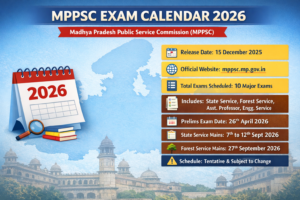Table of Contents
Context: The Delhi government has cleared the Draft Delhi Solar Policy 2022 with an aim of increasing the share of the city’s annual electricity demand met by solar energy from 9% at present to 25% by 2025.
More on the Draft Delhi Solar Policy 2022
- The period of operation of the policy will be 3 years. The policy has been put in public domain for 30 days for comments from stakeholders.
- The draft policy has been prepared by the Dialogue and Development Commission of Delhi (DDC) after consulting with the industry, consumers, government entities, financing institutions, and clean energy think-tanks.
Draft Delhi Solar Policy Highlights 2022
- Target: The draft proposal targets a total installed solar capacity of 6,000 megawatt by 2025.
- The deployment of solar plants on all existing State government properties with a rooftop area of 500 square metres or above has been made compulsory.
- Unified portal: It aims to create a unified single-window State portal managed by the Delhi Solar Cell to provide information on the benefits of solar photovoltaic (PV) systems, process-related guidelines, and timeline.
- Subsidies: For residential consumers, a capital subsidy for mounting structures will be provided at the rate of Rs 2,000 per kW up to a maximum of Rs 10,000 per consumer and adjusted against electricity bills.
- Tax exemption: Taxes and duties will not be levied on generation from RTS (roof top solar) panels whether for self-consumption or supplied to the grid.
- Proposed benefits: Generation Based Incentives (GBI) and capital subsidy for residential and commercial consumers to adopt solar energy.
- Consumers will be given an opportunity for community solar and peer-to-peer (P2P) trading. They can deploy models such as Hybrid RESCO.
- Community solar will allow consumers who do not have a suitable roof for installing a solar set-up to be owners of a part of a larger solar energy system set by a developer within an available land parcel.
- P2P trading of solar energy will allow owners of solar energy systems to sell their excess generated electricity in real-time via a P2P energy trading platform.
- Hybrid RESCO model enables consumers to access the net metering benefits of solar without making any upfront capital investment by entering into an agreement with their power distribution companies.
- The policy also aims to generate over 12,000 green jobs apart from reducing pollution drastically
- Discoms and power distribution companies will be encouraged to increase the share of solar energy procured from outside the NCT of Delhi through innovative models such as RE-RTC (Renewable Energy-Round the Clock).
- RE-RTC combines a host of renewable energy sources (solar, wind and others) alone with appropriately sized battery storage to provide round-the-clock power as per the demand curve of Delhi.
Government Initiatives for Solar Energy
PM KUSUM
- PM-KUSUM (Pradhan Mantri Kisan Urja Suraksha evam Utthaan Mahabhiyan) Scheme was introduced to ensure energy security for farmers in India, along with honouring India’s commitment to increase the share of installed capacity of electric power from non-fossil-fuel sources.
- Components:
- Component-A: For Setting up of 10,000 MW of Decentralized Grid Connected Renewable Energy Power Plants on barren land.
- These power plants can also be installed on cultivable land on stilts where crops can also be grown below the solar panels.
- Component-B: For Installation of 17.50 Lakh stand-alone solar agriculture pumps. Individual farmers will be supported to install standalone solar Agriculture pumps of capacity up to 7.5 HP for replacement of existing diesel pumps.
- Component-C: For Solarisation of 10 Lakh Grid Connected Agriculture Pumps. Individual farmers having grid connected agriculture pump will be supported to solarise pumps.
Development of Solar Parks
- Launch: The scheme was rolled out in December 2014 by the Ministry of New and Renewable Energy (MNRE).
- Objective: To facilitate the solar project developers to set up projects in a plug and play model.
- Time period: Up to 2022-23.
- Salient Features of the Scheme:
- Under this scheme, it was proposed to set up at least 25 Solar Parks and Ultra Mega Solar Power Projects targeting over 20 GW of solar power installed capacity within a span of 5 years starting from 2014-15.
- In 2017, the capacity of the Scheme has been enhanced from 20 GW to 40 GW. These parks are proposed to be set up by 2021-22.
- The scheme facilitates and speeds up installation of grid connected solar power projects for electricity generation on a large scale.
- All the States and Union Territories are eligible for getting benefit under the scheme.
- The capacity of the solar parks shall be 500 MW and above. However, smaller parks are also considered where contiguous land may be difficult to acquire in view of difficult terrain and where there is acute shortage of non-agricultural land.
Grid Connected Solar Rooftop Scheme
- Aim: The initiative aims to generate 40,000 MW of power from Grid Connected Rooftop Solar (RTS) projects.
- Central Financial Assistance (CFA) is provided to the residential electricity consumers under Component-A and incentives are provided to DISCOMs under Component-B of this programme. There are two methods of implementation:
- In Method 1, CFA will be transferred directly to the consumers account after successful installation and verification by State DISCOMs.
- In Method 2, the consumer has to pay only the balance amount after deducting the CFA to the bank account of the vendor after successful installation and verification by the State DISCOMs.


 SSC GD Constable Recruitment 2026: Notif...
SSC GD Constable Recruitment 2026: Notif...
 MPPSC Exam Calendar 2026 Released: Check...
MPPSC Exam Calendar 2026 Released: Check...
 New Ramsar Sites in India: Latest Additi...
New Ramsar Sites in India: Latest Additi...

























